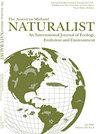佛罗里达州海马基的营养生态学:一个独特的鸟蛇互动网络分析
IF 0.6
4区 环境科学与生态学
Q4 Agricultural and Biological Sciences
引用次数: 1
摘要
摘要2015年,美国佛罗里达州海马岛(Seahorse Key)上的整个筑巢水鸟繁殖地出人意料地放弃了这个岛屿,至今没有返回。这些鸟类与同域的水腹蛇(Agkistrodon conanti)种群有着独特的营养关系,在整个岛屿食物网中也有潜在的重要地位。物种相互作用网络分析用于比较两种营养网络;遗弃前后。营养数据用于为每个网络创建加权邻接矩阵,使用网络分析软件包UCINET比较所得网络指标,并使用NetDraw进行可视化。预放弃网络的结果表明,该网络是一个大型、复杂、分散的网络,具有低中心性和7个子网络。在资源从海洋和潮间带环境转移到陆地营养行会的网络中,有几种殖民地筑巢鸟类被确定为占有重要地位,特别是对蛇。遗弃后的分析显示,陆地营养协会的网络明显断裂,包括蛇更小,更孤立,可能更不稳定。本文章由计算机程序翻译,如有差异,请以英文原文为准。
Trophic Ecology of Seahorse Key, Florida: A Unique Bird-Snake Interaction Network Analysis
Abstract. In 2015 the entire breeding colony of nesting waterbirds on Seahorse Key (Florida, U.S.A.) unexpectedly abandoned the island and have not returned. These birds have a unique trophic relationship with a sympatric cottonmouth snake (Agkistrodon conanti) population, as well as potentially important positions within the entire insular food web. Species-interaction network analysis was used to compare two trophic networks; pre- and post-abandonment. Trophic data were used to create a weighted adjacency matrix for each network and the resulting network metrics were compared using the network analysis software package UCINET and visualized using NetDraw. Results for the pre-abandonment network indicated a large, complex, diffuse network with low centrality and seven sub-networks. Several species of colonial nesting birds were identified as holding important positions within the network for resource transfer from marine and intertidal environments to terrestrial trophic guilds, particularly to the snakes. Post-abandonment analysis showed the network significantly fractured with the terrestrial trophic guild that includes the snakes being smaller, more isolated and potentially less stable.
求助全文
通过发布文献求助,成功后即可免费获取论文全文。
去求助
来源期刊

American Midland Naturalist
环境科学-生态学
CiteScore
1.20
自引率
0.00%
发文量
38
审稿时长
18-36 weeks
期刊介绍:
The American Midland Naturalist has been published for 90 years by the University of Notre Dame. The connotations of Midland and Naturalist have broadened and its geographic coverage now includes North America with occasional articles from other continents. The old image of naturalist has changed and the journal publishes what Charles Elton aptly termed "scientific natural history" including field and experimental biology. Its significance and breadth of coverage are evident in that the American Midland Naturalist is among the most frequently cited journals in publications on ecology, mammalogy, herpetology, ornithology, ichthyology, parasitology, aquatic and invertebrate biology and other biological disciplines.
 求助内容:
求助内容: 应助结果提醒方式:
应助结果提醒方式:


